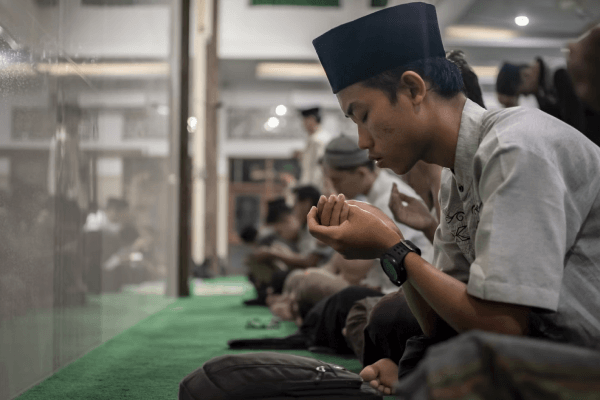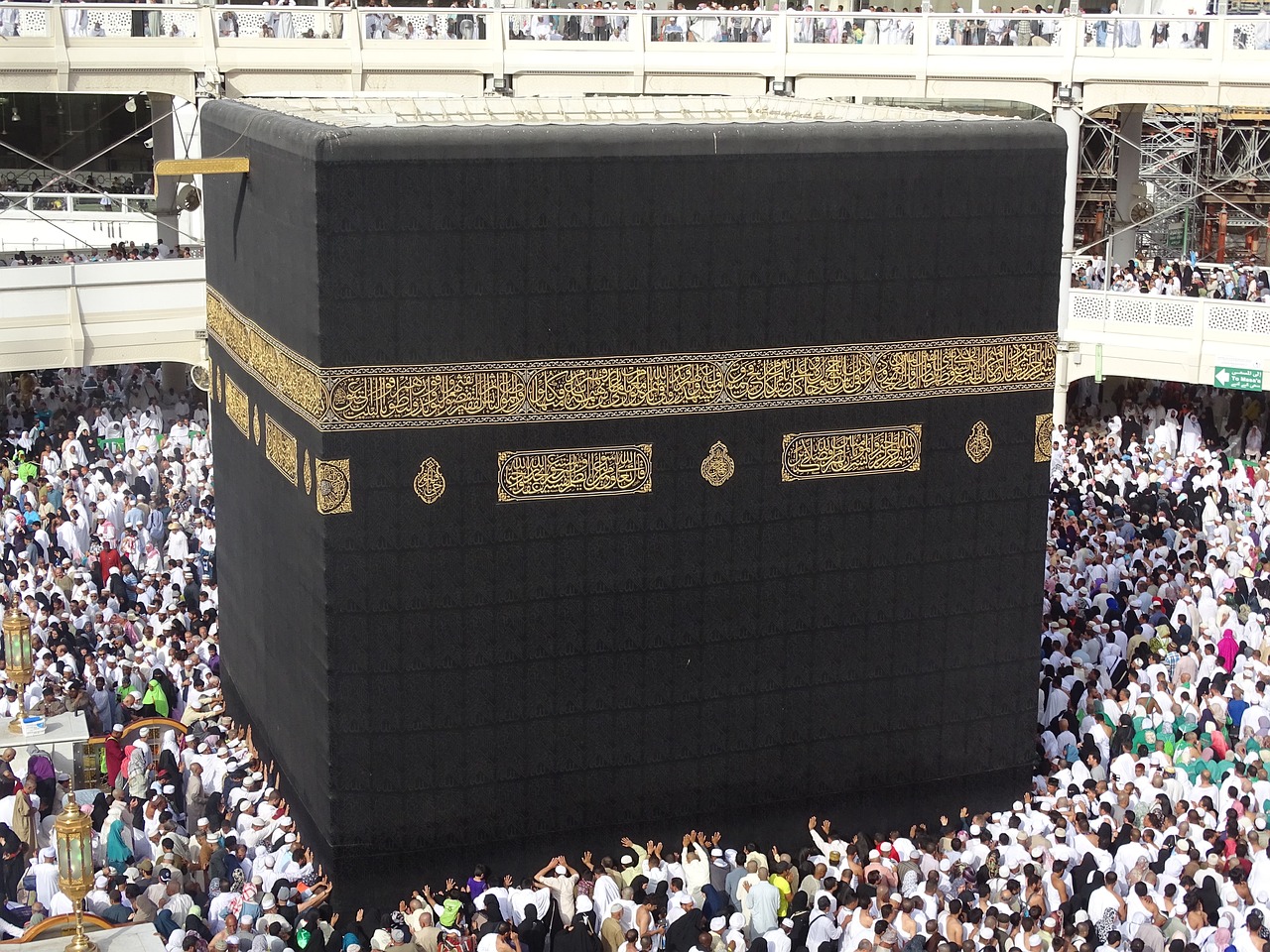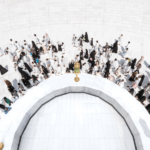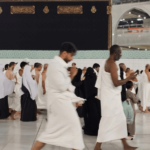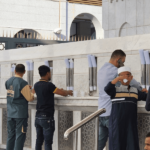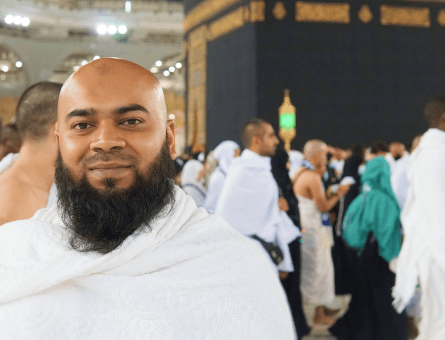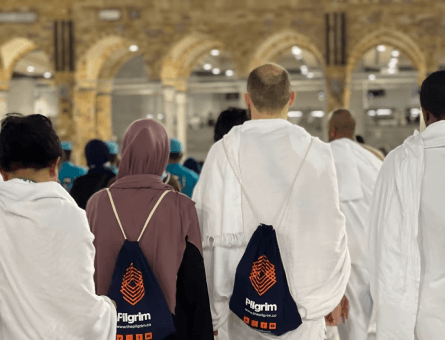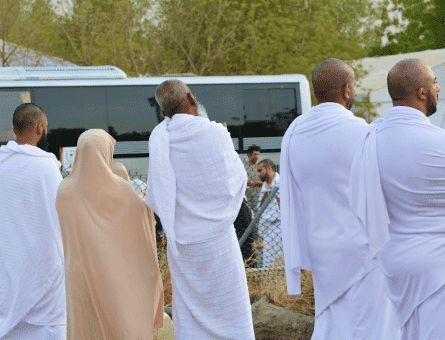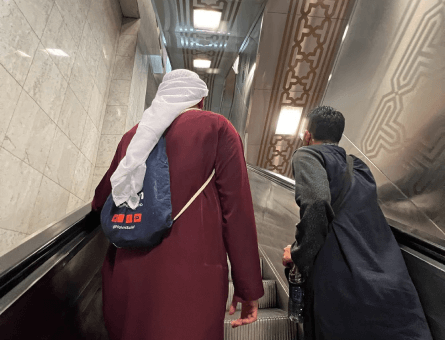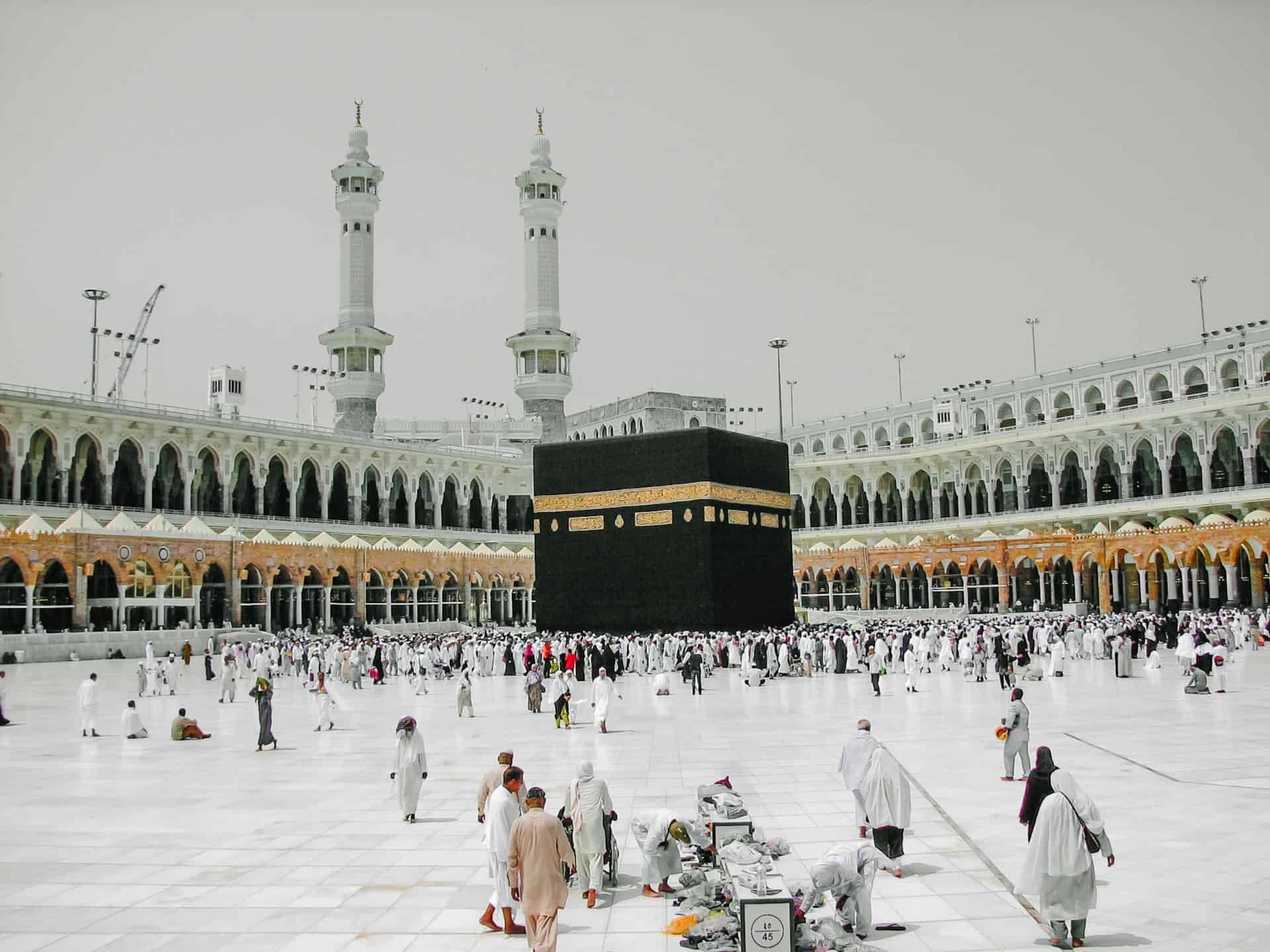Bani Shaiba – History, Facts and Significance – Everything You Need To Know
The Bani Shaiba, also known as the Banu Shaybah or Shaibah, is a prominent tribe in Saudi Arabia that traces its lineage back to Shaiba ibn Hashim. Shaiba ibn Hashim is the great-grandfather of the Prophet Muhammad (PBUH), making the Banu Shaiba part of the broader Quraysh tribe.
The Quraysh tribe, to which the Banu Shaiba belongs, was a powerful and influential tribe in pre-Islamic Saudi Arabia. Makkah, the birthplace of Prophet Muhammad (PBUH), was under the control and influence of the Quraysh tribe.
The Holy Kaaba, a sacred structure in Makkah, was also in the custody of the Quraysh.
This comprehensive article aims to delve into the rich history, genealogy, cultural aspects, and the role of the Bani Shaiba in the transformative era in Saudi Arabia and the advent of Islam.
Genealogy and Lineage
Shaiba ibn Hashim: Ancestor of the Bani Shaiba
Shaiba ibn Hashim holds a significant place in the genealogy of the Bani Shaiba. As the ancestor of this esteemed lineage, his role cannot be understated. Through his descendants, the Bani Shaiba has established a rich and storied history deeply intertwined with the legacy of Prophet Muhammad (PBUH).
Shaiba ibn Hashim’s position as the great-grandfather of the Prophet (SAW) adds even more weight to his importance. Through this connection, the Bani Shaiba can claim such a close ancestral tie to one of the most revered figures in Islamic history.
The lineage of Shaiba ibn Hashim serves as a testament to the enduring impact and influence he had on shaping the destiny of future generations.
Today, descendants of the Bani Shaiba continue to honor their heritage and remain proud of their ancestral ties to this influential figure. The legacy of Shaiba ibn Hashim lives on through his descendants, who carry forward his name and strive to embody his values and teachings in their daily lives.
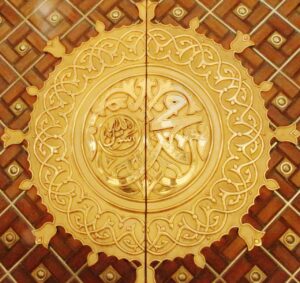
Connection to the Quraysh Tribe
The Bani Shaiba played a significant role within the larger framework of the Quraysh tribe, exerting their influence in pre-Islamic Saudi Arabia and the Holy Kaaba. As a prominent sub-tribe of the Quraysh, they held a strong connection to their ancestral roots and were deeply respected by other clans.
Known for their bravery and leadership qualities, the Bani Shaiba contributed to the overall strength and unity of the Quraysh tribe. Their close ties with the Quraysh allowed them to partake in important decision-making processes and hold positions of power within the community.
The Bani Shaiba also played a crucial role in maintaining alliances and trade routes, ensuring economic prosperity for the entire tribe. Their connections facilitated peaceful negotiations and resolved conflicts among different clans, fostering stability within the Quraysh tribe.
Additionally, their skilled warriors were instrumental in defending the tribe against external threats, further solidifying their position as an integral part of the Quraysh’s defense system.
Uthman ibn Talha: The Key-Bearer
Uthman ibn Talha, also known as Ibn Abi al-Shaiba, played a pivotal role in the history of the Bani Shaiba tribe and its association with the Kaaba.
As the designated key-bearer of the Kaaba, Uthman ibn Talha was entrusted with the monumental responsibility of opening and closing the doors of the sacred structure.
The significance of this role was magnified during the conquest of Mecca in 630 CE when Prophet Muhammad (PBUH), upon entering the city, took the keys to the Kaaba from Uthman ibn Talha.
Instead of treating it as a conquest, the Prophet displayed a remarkable act of humility and respect, acknowledging the Bani Shaiba tribe’s historical custodianship of the Kaaba.
The Symbolic Green Dome: A Distinctive Mark
The Bani Shaiba tribe’s connection to Islamic heritage extends beyond the confines of the Kaaba. The symbolic green dome that adorns the Prophet’s Mosque in Medina, known as the Masjid al-Nabawi, carries with it the historical significance of the tribe’s role as caretakers of the Prophet Muhammad’s (PBUH) legacy.
The green dome, also known as the Dome of the Prophet, is believed to cover the final resting place of Prophet Muhammad (PBUH). This iconic structure has become a symbol of veneration and a point of pilgrimage for millions of Muslims worldwide.
The Bani Shaiba tribe’s historical association with the Prophet and their continued guardianship of sacred sites underscores their integral role in preserving Islamic heritage.
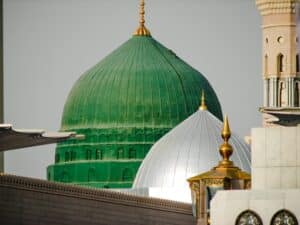
The Qadir al-Haramayn: A Testament to Custodianship
The Qadir al-Haramayn, a title bestowed upon the Bani Shaiba tribe, signifies their role as custodians of the two holy cities – Mecca and Medina. This title emphasises the tribe’s unique position in safeguarding the sanctity of Islam’s two most sacred sites.
The responsibility of caretaking the holy cities encompasses the physical structures of the Kaaba and the Prophet’s Mosque and the spiritual and cultural heritage embedded in these sacred places.
The Bani Shaiba tribe’s commitment to upholding the values and traditions associated with these sites contributes to the continuity of Islamic heritage for generations to come.
The Legacy of Ibn Talha: Continued Custodianship
The legacy of custodianship initiated by Uthman bin Talha has endured through the centuries within the Bani Shaiba tribe. The keys to the Kaaba today remain in the possession of the descendants of Uthman bin Talha, passing from one generation to the next, ensuring the unbroken chain of guardianship.
The current caretaker of the Kaaba, Sheikh Abdul Qadir al-Shaibi, is a direct descendant of Uthman ibn Talha. Sheikh Abdul Qadir al-Shaibi, like his forefathers, shoulders the responsibility of opening and closing the doors of the Kaaba, maintaining the traditions and rituals associated with this sacred duty.

Historical Role in Makkah
Makkah and the Quraysh Dominance
Makkah, a desert oasis in the heart of the Arabian Peninsula, became a crucible of culture, commerce, and faith. Central to its historical narrative is the dominance of the Quraysh tribe, whose influence shaped Makkah into a vibrant center of cultural, economic, and religious significance.
The Rise of the Quraysh
The ascent of the Quraysh to prominence in Makkah was inexorably linked to their custodianship and guardianship of the Holy Kaaba. This sacred edifice, attributed to the Prophet Ibrahim’s (AS) construction, was a cornerstone of the Quraysh’s authority.
Their revered role as custodians not only heightened the sanctity of Makkah but also catapulted the Quraysh into a leadership position, shaping the city’s destiny.
Standing as a symbol of divine connection, the Holy Kaaba became the center point around which the Quraysh’s influence radiated, solidifying their leadership and imprinting an enduring legacy on Makkah’s historical landscape.
Cultural Significance
The Kaaba emerged as the linchpin of Makkah’s culture, encapsulating a shared identity among the diverse clans under Quraysh leadership. The custodianship of this revered sanctuary became the crucible where cultural threads intertwined, forging a unity that set the Quraysh apart in the rich mosaic of Arabian tribes.
As the heart of Makkahn spirituality, the Kaaba symbolised divine connection and served as a cultural nexus, fostering a collective identity that transcended individual clans. The Quraysh, through their custodianship, became the guardians not only of a sacred structure but also of a cultural heritage.
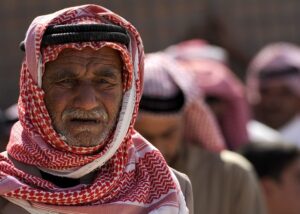
Economic Prosperity
Situated at the crossroads of vital trade routes, Makkah emerged as an economic nucleus, defining its destiny as a bustling hub of commerce. The Quraysh, with astute foresight, harnessed their control over the caravan trade, steering Makkah towards unprecedented economic prosperity.
The city’s strategic position facilitated a flourishing exchange of goods and ideas, with the Quraysh orchestrating a vibrant trade network that transcended regional boundaries.
This economic ascendancy enhanced Makkah’s status as a trading powerhouse and solidified the Quraysh’s influence, positioning them at the forefront of Arabian economic prowess.
Religious Significance
The Kaaba’s status as a sacred pilgrimage site drew tribes from across Saudi Arabia annually. Under Quraysh custodianship, Makkah became a religious nexus, fostering unity and devotion among the pilgrims who undertook the sacred journey. The Quraysh, as custodians, held both spiritual and influential sway.
The Advent of Islam
Resistance to Islam
In the crucible of early Islam, the Quraysh, notably the Bani Shaiba, initially resisted the transformative message brought by Prophet Muhammad (PBUH). This resistance was not merely a rejection of a new faith but a complex interplay of social, political, and religious dynamics that shaped their response.
Religious Paradigm
The Quraysh, a tribe deeply rooted in their polytheistic beliefs and with a strong attachment to the sacred Kaaba, saw the rise of Islam as a direct threat to their religious dominance.
The message of monotheism brought by Islam challenged the very core of their entrenched practices and shook the foundations of their belief system.
Faced with this challenge, the Quraysh were compelled to adopt a defensive stance to preserve the status quo and protect their religious hegemony. They saw Islam as an assault on their traditions, customs, and way of life, leading them to resist its teachings vehemently.
The monotheistic message posed a significant danger to their established power structure and authority within Makkah, questioning the legitimacy of their gods and rituals. This defensive stance was fueled by fear of losing control and a deep-seated resistance to change that threatened their social fabric.
The Quraysh leaders used all means at their disposal, including verbal attacks, economic boycotts, and even physical violence, in an attempt to suppress the spread of Islam and maintain their grip on power.
However, despite these efforts, Islam continued to gain followers and ultimately emerged victorious over the defensive stronghold of the Quraysh.
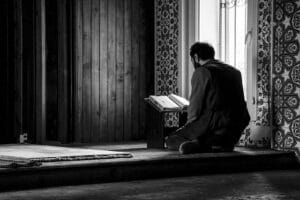
Threat to Social Hierarchy
The egalitarian principles of Islam were seen as a direct challenge to the established social order that the Quraysh had worked so hard to maintain. The idea of breaking down the barriers of societal stratification caused great unease among the elite, who were used to their privileged positions.
Islam’s emphasis on equality and brotherhood went against the traditional tribal affiliations that had long been the basis for social status.
This new belief system threatened to upend the power dynamics that had been in place for generations. It offered a vision where everyone, regardless of background, would be seen as equal and deserving of respect.
This was a radical departure from the existing norms, and it is no wonder that it was met with resistance from those who stood to lose their advantages.
However, this did not deter the early followers of Islam, who wholeheartedly embraced these revolutionary ideas and sought to spread them far and wide. They saw a path towards a more just society in Islam, where fairness and compassion reign supreme.
Economic Implications
The impact of Islam on the economic order was profound. With its emphasis on ethical trade practices, the new faith significantly shifted how commerce was conducted. The existing pilgrimage-centric commerce, which the Quraysh largely controlled, had to adapt to this new paradigm.
This meant that established economic norms were challenged and had to be reevaluated. The focus on fair and just transactions became paramount, replacing any exploitative practices that may have been prevalent before.
Moreover, with Islam promoting social justice and equality, there was a newfound emphasis on wealth distribution and ensuring everyone had access to opportunities for economic growth.
This led to an overall transformation of the financial landscape, as it became more inclusive and equitable for all members of society. Integrating religious beliefs into economic activities also fostered a sense of accountability and responsibility among traders and merchants.
They now had to consider not only their own profits but also the ethical implications of their actions.
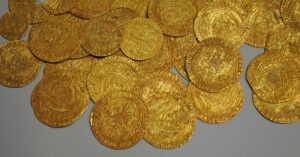
Bani Shaiba and Tribal Loyalties
The Bani Shaiba, a branch of the Quraysh, found themselves at a crossroads between their tribal loyalties and the allure of Islam. This internal struggle created a rift within the community, as the call to embrace Islam clashed with their deep-rooted tribal bonds.
While some individuals were drawn to the new faith, others clung tightly to their allegiance to the tribe, reluctant to relinquish the honor code that had governed their lives for generations.
Consequently, this clash of loyalties led to internal strife and divisions among the Bani Shaiba. The tension between embracing Islam and preserving tribal traditions became a constant challenge for many members of the community as they grappled with conflicting emotions and allegiances.
It was not an easy decision for them to make, as they weighed the consequences of either choice – forsaking their tribe or turning away from the appeal of Islam.
Conversion to Islam
The conversion of members of the Bani Shaiba to Islam marked a profound shift in Makkan dynamics. Exploring the pivotal moments that influenced this transformation unveils the intricate factors that led individuals within the tribe to embrace the new faith.
Influential Personalities
Key figures within the Bani Shaiba community were profoundly impacted by their personal interactions with Prophet Muhammad (PBUH). Through these transformative encounters, they truly witnessed the power and beauty of his message.
The Prophet’s (PBUH) charisma and genuine sincerity captivated the hearts and minds of those around him, drawing them closer to Islam. His words resonated deeply within their souls, leaving a lasting impression on their lives.
The authenticity of his teachings was undeniable, inspiring individuals to reevaluate their beliefs and embrace the new faith. These encounters were not just fleeting moments but life-altering experiences that shaped the course of history for the Bani Shaiba and countless others who came into contact with the Prophet.
His words and actions instilled a sense of purpose and meaning in their lives, leading them toward a path of righteousness and spiritual enlightenment.
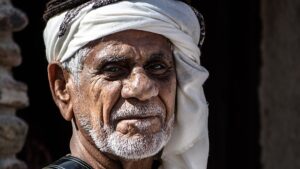
Social and Tribal Dynamics
As tribal alliances shifted and social dynamics transformed in Makkah, the conversion to Islam gained momentum. The evolving landscape witnessed certain tribes embracing the teachings of Islam, which in turn fostered an environment of acceptance.
Within this context, the members of Bani Shaiba felt a sense of connection and support in their decision to follow the new faith. No longer isolated, they found solace in knowing others were also embracing Islam. This sense of communal solidarity gave them the strength and conviction to commit to their newfound beliefs fully.
Appeal of Islamic Principles
The universal principles espoused by Islam, emphasising justice, equality, and ethical conduct, resonated deeply with the individuals within the Bani Shaiba community. As they embraced these principles, a transformation began to take place within their society.
The stark contrast between the teachings of Islam and Prophet Muhammad (PBUH) and the pre-existing tribal norms and practices became increasingly apparent. This sparked a desire among the people for a more moral way of life.
With the influence of Islam, the Bani Shaiba community started to question the traditions that had been blindly followed for generations. They saw how Islam upheld values such as fairness and equal treatment for all members of society, regardless of their social status or background.
This newfound awareness led to a shift in their mindset and actions. The people became more conscious of their ethical conduct towards one another and worked towards creating a just and equitable society. They recognised that embracing these universal principles could only achieve true progress.
The principles of justice and equality became guiding forces in the daily lives of the Bani Shaiba community. They strived to treat each other with respect, kindness, and fairness, fostering an environment where everyone felt valued and heard.
Role in Islamic History
Early Muslim Community
The Bani Shaiba, a significant branch of the Quraysh, played a crucial role in the development of the Muslim community, contributing to its growth both in Makkah and later in Medina. Examining their multifaceted contributions unveils the integral part this tribe played in the formative years of Islam.
Early Days in Makkah
During those tumultuous early years of Islam in Makkah, the Bani Shaiba tribe played a pivotal role in connecting the Prophet Muhammad (PBUH) with the larger Quraysh community. As Islam faced fierce resistance and opposition, the members of this tribe who had embraced the faith stood as pillars of support and unity.
Their commitment to Islam helped bridge the gap between the Prophet (PBUH) and the rest of society, promoting understanding and acceptance. By offering crucial support to the Prophet Muhammad (PBUH), the Bani Shaiba tribe helped foster a sense of solidarity among Muslims despite their challenges.
In this way, they became instrumental in strengthening the fledgling community and paving the way for its growth and expansion.
Migration to Medina
As the Muslim community faced mounting hostility in Makkah, including economic boycotts and persecution, the decision to migrate to Medina became crucial for members of the Bani Shaiba tribe. This migration provided them with a refuge from the oppressive environment and solidified their connection with the Prophet’s (SAW) community.
In Medina, they found a new sense of belonging and support as they joined fellow Muslims in building a strong foundation for their faith. The Bani Shaiba tribe actively participated in community affairs, contributing to the growth and development of the emerging Muslim society.
Their presence in Medina further strengthened the bonds between different tribes and individuals, creating a unified front against those who sought to harm or undermine their beliefs.
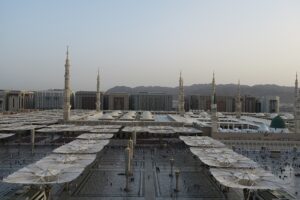
Contributions in Medina
In addition to their active participation in the Battle of Badr, the Bani Shaiba of Medina played a crucial role in other aspects of community life. Their dedication to the nascent Muslim state extended beyond military endeavors.
Many members of the Bani Shaiba were known for their expertise in various fields, such as agriculture, trade, and governance.
They contributed significantly to the economic growth and development of Medina. Their knowledge and skills were sought after by fellow community members who relied on their guidance and support.
The Bani Shaiba’s commitment to the welfare and progress of the community made them respected figures in Medina.
Legacy of Bani Shaiba
The legacy of the Bani Shaiba extends far beyond the annals of early Islamic history. As we delve into the present, the enduring impact of this tribe and its descendants is palpable, significantly shaping cultural and familial aspects.
Who is the Bab Bani Shaiba family in Islam?
The Bab Bani Shaiba family’s connection to the Holy Kaaba is deeply entrenched in the annals of Islamic history. Their legacy is one of custodianship, a duty passed down from generation to generation, with the solemn responsibility of safeguarding the keys to the Kaaba.
This family’s association with the Kaaba elevates them to a position of great honor and trust within the Muslim community.
The keys to the Kaaba are not ordinary keys; they symbolise a sacred trust dating back to the time of the Prophet Ibrahim (AS). According to Islamic tradition, Ibrahim, along with his son Isma’il (AS), was chosen by Allah to rebuild the Kaaba.
The keys were handed down to the Bani Shaiba family, marking them as the guardians of the sacred space.
The role of the Bab Bani Shaiba family extends beyond the physical act of unlocking and locking the gates. They are responsible for managing the affairs of the Kaaba, ensuring its sanctity, and facilitating the entry of dignitaries and officials during various ceremonies.
Their duty is not only logistical but imbued with a spiritual significance that resonates with the millions of pilgrims who embark on the pilgrimage each year.
The identity and lineage of the Bab Bani Shaiba family members who hold this prestigious position may not be widely publicised, but their impact is palpable. Their commitment to the sacred duty of caring for the Kaaba reflects a profound sense of devotion and responsibility.
Wrapping Up – Bani Shaiba
In conclusion, the Bani Shaiba emerges as a pivotal tribe in the narrative of Islamic history.
From their ancestral connection to Shaiba ibn Hashim to their role in Makkah, conversion to Islam, and subsequent contributions to the early Muslim community, the Bani Shaiba’s journey encapsulates the dynamic shifts in the Arabian Peninsula during a transformative period.
By unraveling the layers of their history, we gain a profound understanding of the intricate tapestry that shaped the Islamic world.
Through His Names
New course with
Ustadh Shabbir Hassan




